June 21
2015 June 21
Sorry – no June 20 posting – I was at Mount Washington looking for butterflies! As a result of being away for a day, I have accumulated a whole bunch of welcome contributions, and it will take me a few days to catch up and post them all. In the meantime, here is Aziza’s report on our trip to Mount Washington. A big thank you to Aziza for organizing such an exciting trip. I dare say we’ll be getting some more photos from the trip in the next day or so. [And I know I’m not supposed to mention vertebrates on this site, but I’ll just whisper quietly – we saw a Vancouver Island Marmot!!!]
Aziza’s report:
On our VNHS field trip to Mount Washington, about 10 people saw four species of butterflies. Three of us ended the day with a single Great Arctic.
Species seen by the whole group were:
Western Meadow Fritillary – many, possibly 30
Hydaspe Fritillary – 2
Anna’s Blue – 10-15
Silvery Blue
When we arrived at the parking lot at 11:30am, the sky was very dark and cloudy, temperature was 8 C and it was spitting rain. The group immediately found perched Anna’s Blues and fritillaries near the base of the chairlift. The weather got steadily better all day, and ended with mostly sunny skies at 4pm. By that time the fritillaries were being seen frequently.
It was a long climb up the mountain, but everyone made it. There were no butterflies hilltopping at the summit, possibly due to the cold temperature and mostly cloudy skies at that elevation. The moth devotees found various moths along the way. We took the chairlift down, an easy way to finish.
Aziza Cooper
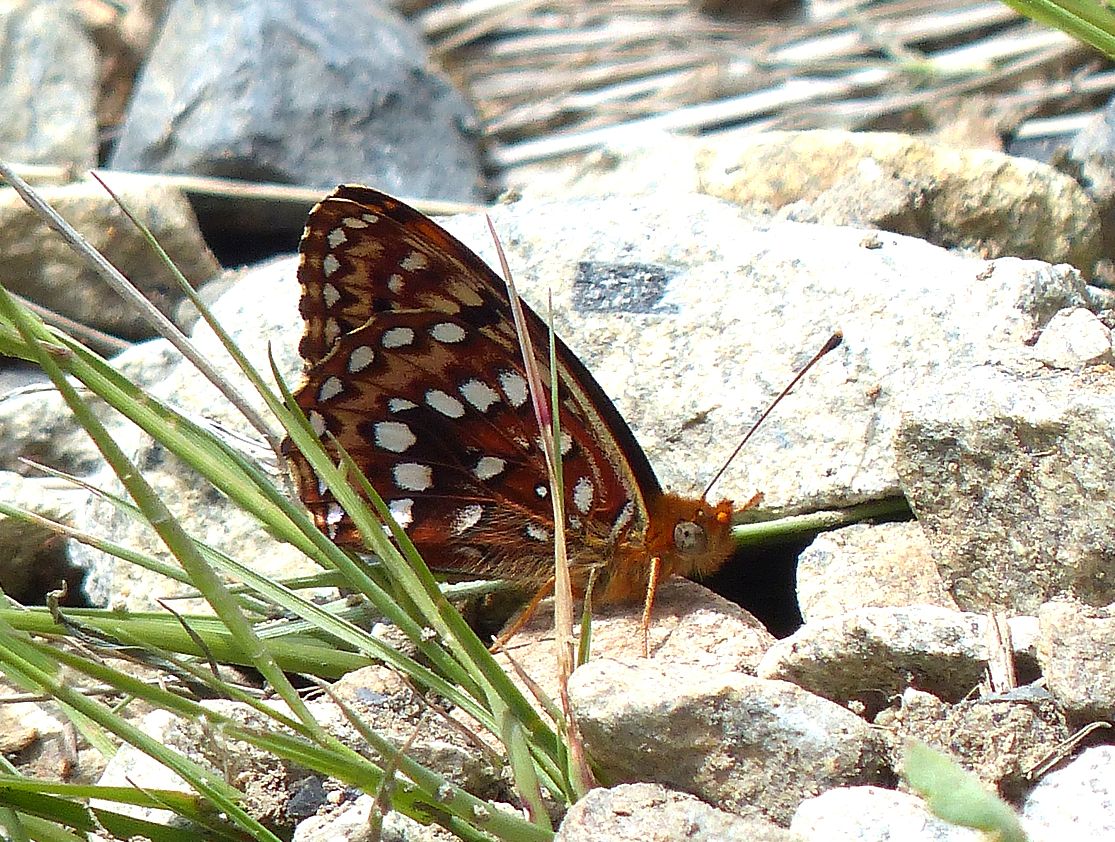
 Hydaspe Fritillary Speyeria hydaspe (Lep.: Nymphalidae) Aziza Cooper
Hydaspe Fritillary Speyeria hydaspe (Lep.: Nymphalidae) Aziza Cooper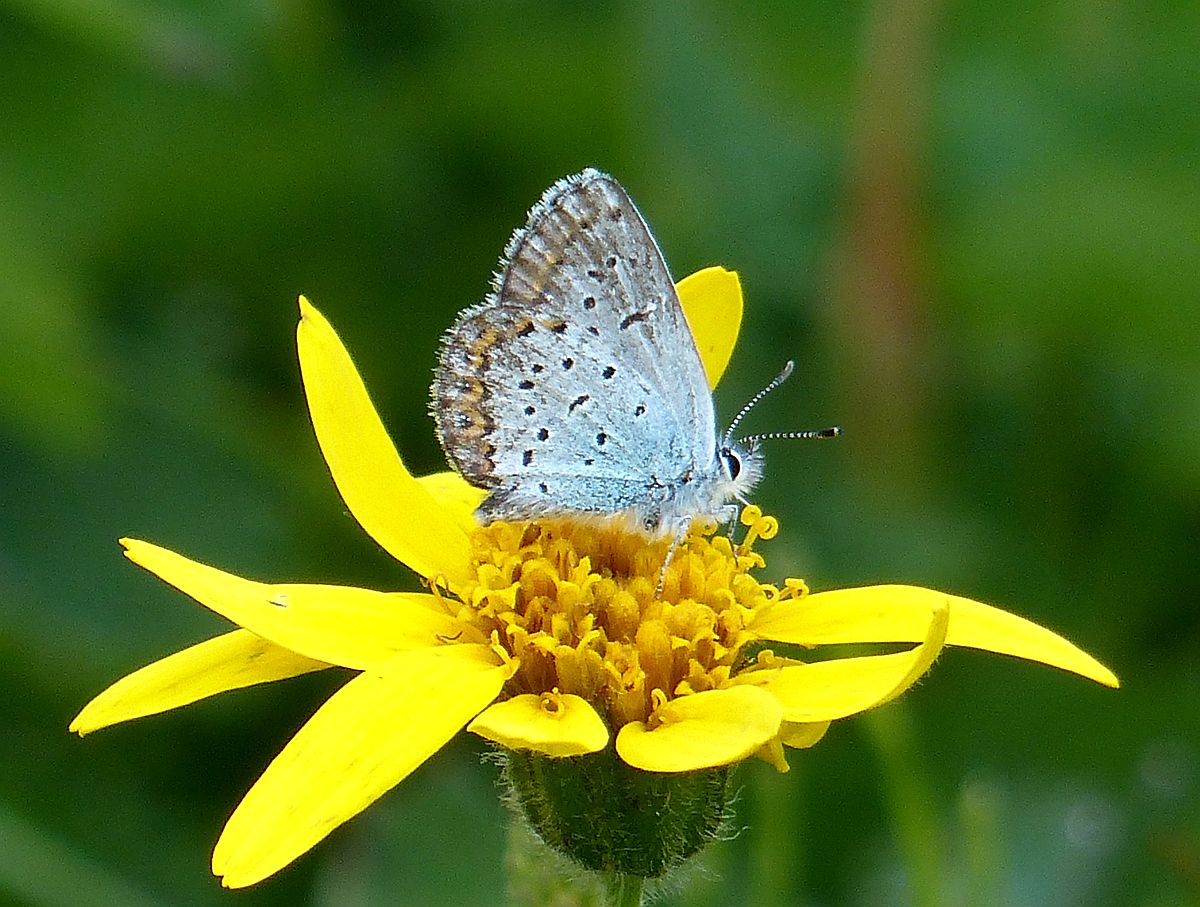
 Anna’s Blue Lycaeides anna (Lep.: Lycaenidae) Aziza Cooper
Anna’s Blue Lycaeides anna (Lep.: Lycaenidae) Aziza Cooper
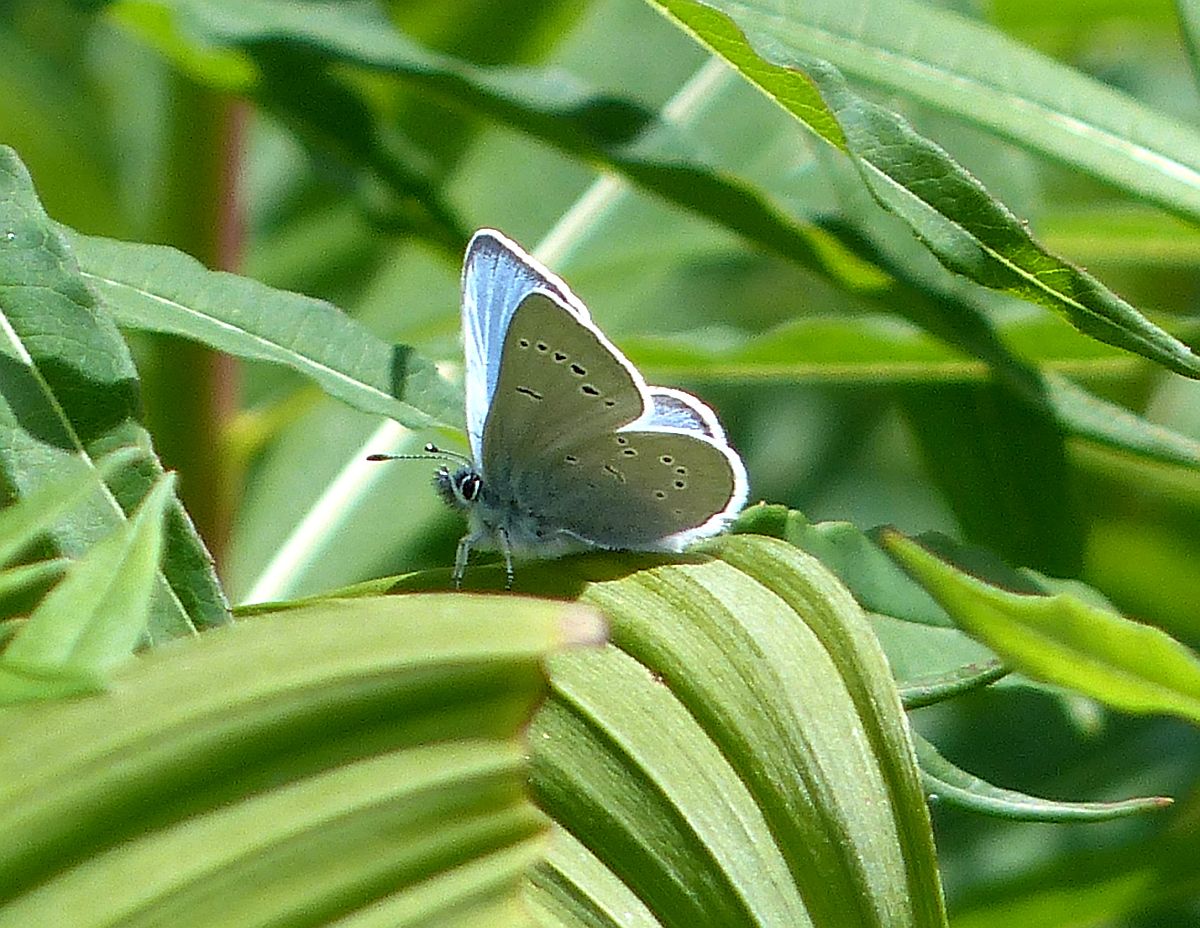
 Silvery Blue Glaucopsyche lygdamus (Lep.: Lycaenidae) Aziza Cooper
Silvery Blue Glaucopsyche lygdamus (Lep.: Lycaenidae) Aziza Cooper
Jeff Gaskin writes: On June 19, around 12:30 pm. I was with Rick Schortinghuis looking for the Field Crescents on Stelly’s Cross Road, and we found just one or possibly two as we weren’t positive if we were seeing the same one again. Jeremy Tatum writes: On the same day I saw a fresh Satyr Comma at Bow Park – presumably one of the first of this year’s crop to emerge.
Val George writes: This afternoon, June 19, I finally managed to get out to Stelly’s Cross Road to check out the Field Crescents that Aziza originally located. There were at least four in the exact spot Aziza described in the left corner of the back field by Eddy’s Self Storage; they were moving around the Oxeye Daisies. Also there, I saw my first Woodland Skipper of the season among the many European Skippers present.
On my way home I stopped briefly at Mount Douglas and found 3 Anise Swallowtails and 4 Painted Ladies (3 of them very worn) at the summit.
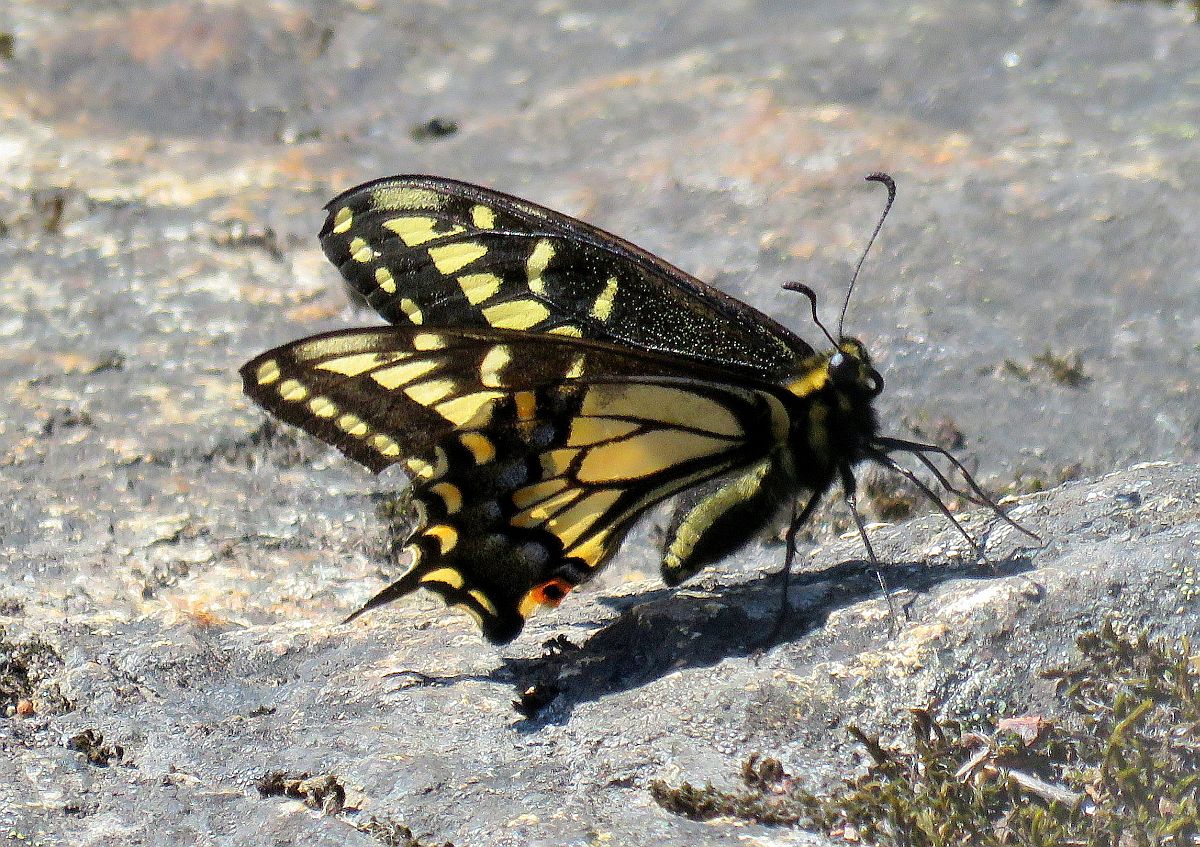
 Anise Swallowtail Papilio zelicaon (Lep.: Papilionidae) Val George
Anise Swallowtail Papilio zelicaon (Lep.: Papilionidae) Val George

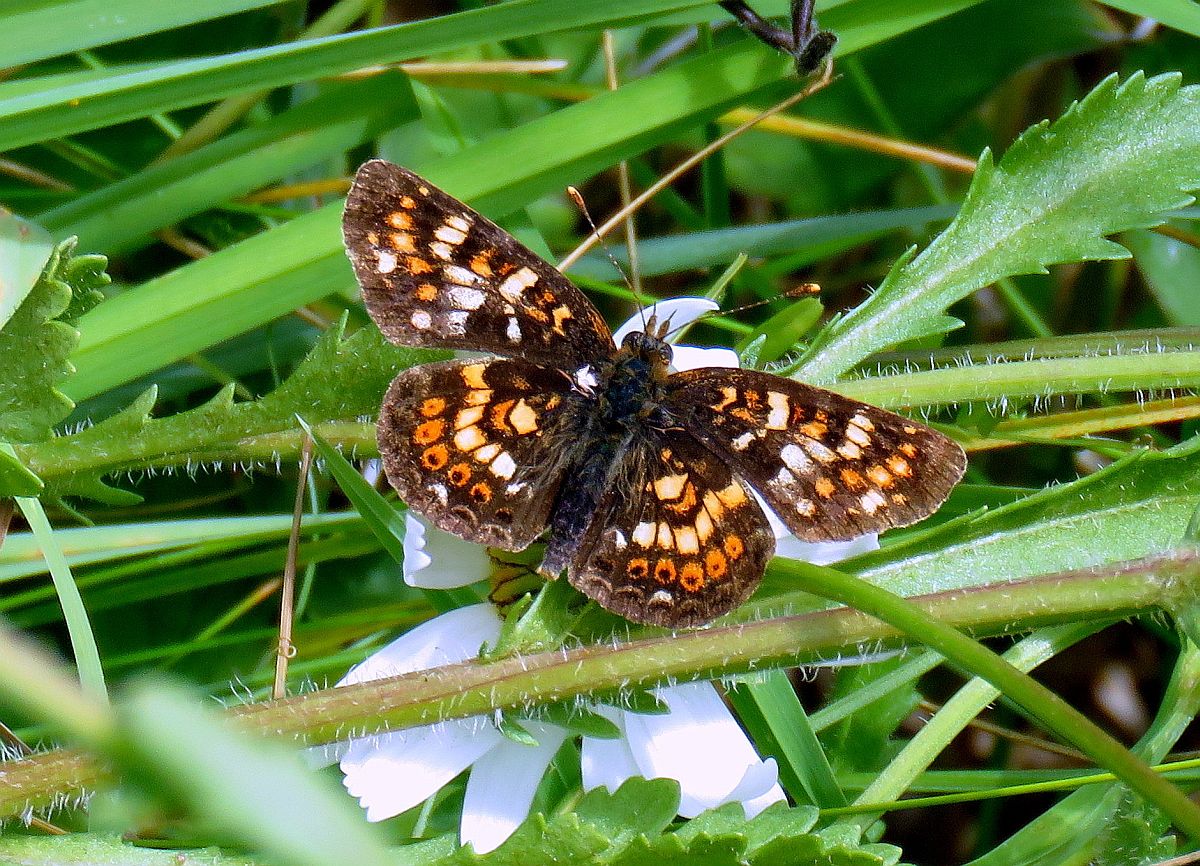
Field Crescent Phyciodes pratensis (Lep.: Nymphalidae) Val George
Chris Garrett writes: My wife Elizabeth and I are trying to learn a bit more about local butterflies, such as they are. One was trapped in our greenhouse a few days ago, though it did eventually get out. It was difficult to photograph, and the best I could do was to get it on the edge of a photo while the camera had auto-focussed elsewhere. [Jeremy Tatum responds: Welcome to the world of butterfly-watchers, Chris and Elizabeth! Yes, the focus is perhaps not quite good enough to reproduce well here, but it is good enough to identify the butterfly as a California Tortoiseshell. This is a migratory species which sometimes (not every year) puts in an appearance here in April. There were several reports this year, but the last one reported to this site was on May 15. They usually don’t stay here, and breeding records are very few. Your butterfly looks fresh rather than worn, so this invites a suspicion that some of the April butterflies laid eggs here (probably on Ceanothus thyrsiflorus), and yours is the first of a new generation, having been bred here.]
